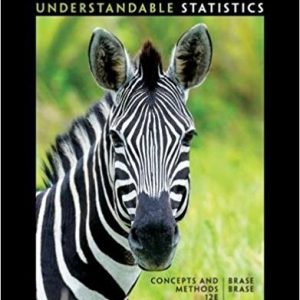This is completed downloadable of Solution Manual for Microeconomics, 13th Edition, Roger A. Arnold, ISBN-10: 1337617407, ISBN-13: 9781337617406

Product Details:
- ISBN-10 : 1337617407
- ISBN-13 : 978-1337617406
- Author: Roger A. Arnold
Ever wonder why colleges use GPAs, ACTs, and SATs for purposes of admission, or how supply and demand play out on a freeway, or what price has to do with being late to class, or how you might end up paying for good weather? ECONOMICS, 13E answers these questions and many more as this book opens up the world of economic analysis. This edition offers more detailed coverage of how economists build theories to explain everyday life than any other principles of economics text on the market. Memorable examples from pop culture illustrate the unexpected places economics occur and show you how economic forces link to every day events. This edition offers complete video assets to assist you in learning economics. There are short video lectures to assist you with key economic concepts and theories. In addition, Video Office Hours (longer video lectures) is a digital video asset that answers questions that students often have for their instructors during office hours. There are also videos assets – such as What’s Wrong with this Diagram Working with Diagrams and Progression Graphs that assist you in learning and working with all the diagrams that are in an economics principles course. A new Adaptive Test Prep available on MindTap Enables you to assess your personal economic understanding. Powerful digital resources, including Aplia and MindTap, work with the book’s latest content to reflect today’s changing economy and equip you with a thorough understanding of contemporary microeconomics.
Table of Content:
- Part 1: Economics: The Science of Scarcity
- Chapter 1: What Economics Is About
- 1-1 Your Life, 2019-2029
- 1-2 A Definition of Economics
- 1-3 Key Concepts in Economics
- 1-4 Ceteris Paribus and Theory
- 1-5 Economic Categories
- Chapter Summary
- Key Terms and Concepts
- Questions and Problems
- Working with Numbers and Graphs
- Appendix A: Working with Diagrams
- Appendix B: Should You Major in Economics?
- Chapter 2: Production Possibilities Frontier Framework
- 2-1 The Production Possibilities Frontier
- 2-2 Specialization and Trade Can Move Us beyond Our PPF
- Chapter Summary
- Key Terms and Concepts
- Questions and Problems
- Working with Numbers and Graphs
- Chapter 3: Supply and Demand: Theory
- 3-1 What Is Demand?
- 3-2 Supply
- 3-3 The Market: Putting Supply and Demand Together
- Chapter Summary
- Key Terms and Concepts
- Questions and Problems
- Working with Numbers and Graphs
- Chapter 4: Prices: Free, Controlled, and Relative
- 4-1 Price
- 4-2 Price Controls
- 4-3 Two Prices: Absolute and Relative
- Chapter Summary
- Key Terms and Concepts
- Questions and Problems
- Working with Numbers and Graphs
- Chapter 5: Supply, Demand, and Price: Applications
- 5-1 Application 1: U-Haul Rates and Demand
- 5-2 Application 2: Subsidizing the Consumption of Anything Can Raise Its Price
- 5-3 Application 3: 10 A.M. Classes in College
- 5-4 Application 4: Why Do Colleges Use GPAs, ACTs, and SATs for Purposes of Admission?
- 5-5 Application 5: Why Is Medical Care So Expensive?
- 5-6 Application 6: Do You Pay for Good Weather?
- 5-7 Application 7: The Price of an Aisle Seat
- 5-8 Application 8: College Superathletes
- 5-9 Application 9: Easier-to-Obtain Loans and Higher Housing Prices
- 5-10 Application 10: Speculators, Price Variability, and Patterns
- 5-11 Application 11: Supply and Demand on a Freeway
- 5-12 Application 12: Are Renters Better Off?
- Chapter Summary
- Questions and Problems
- Working with Numbers and Graphs
- Part 2: Microeconomic Fundamentals
- Chapter 6: Elasticity
- 6-1 Elasticity: Part 1
- 6-2 Elasticity: Part 2
- 6-3 Other Elasticity Concepts
- 6-4 The Relationship between Taxes and Elasticity
- Chapter Summary
- Key Terms and Concepts
- Questions and Problems
- Working with Numbers and Graphs
- Chapter 7: Consumer Choice: Maximizing Utility and Behavioral Economics
- 7-1 Utility Theory
- 7-2 Consumer Equilibrium and Demand
- 7-3 Behavioral Economics
- Chapter Summary
- Key Terms and Concepts
- Questions and Problems
- Working with Numbers and Graphs
- Appendix C: Budget Constraint and Indifference Curve Analysis
- Chapter 8: Production and Costs
- 8-1 Why Firms Exist
- 8-2 Two Sides to Every Business Firm
- 8-3 Production
- 8-4 Costs of Production: Total, Average, Marginal
- 8-5 Production and Costs in the Long Run
- 8-6 Shifts in Cost Curves
- Chapter Summary
- Key Terms and Concepts
- Questions and Problems
- Working with Numbers and Graphs
- Part 3: Product Markets and Policies
- Chapter 9: Perfect Competition
- 9-1 The Theory of Perfect Competition
- 9-2 Perfect Competition in the Short Run
- 9-3 Perfect Competition in the Long Run
- 9-4 Topics for Analysis in the Theory of Perfect Competition
- Chapter Summary
- Key Terms and Concepts
- Questions and Problems
- Working with Numbers and Graphs
- Chapter 10: Monopoly
- 10-1 The Theory of Monopoly
- 10-2 Monopoly Pricing and Output Decisions
- 10-3 Perfect Competition and Monopoly
- 10-4 The Case against Monopoly
- 10-5 Price Discrimination
- Chapter Summary
- Key Terms and Concepts
- Questions and Problems
- Working with Numbers and Graphs
- Chapter 11: Monopolistic Competition, Oligopoly, and Game Theory
- 11-1 The Theory of Monopolistic Competition
- 11-2 Oligopoly: Assumptions and Real-World Behavior
- 11-3 Price and Output under the Cartel Theory
- 11-4 Game Theory, Oligopoly, and Contestable Markets
- 11-5 A Review of Market Structures
- 11-6 Applications of Game Theory
- Chapter Summary
- Key Terms and Concepts
- Questions and Problems
- Working with Numbers and Graphs
- Chapter 12: Government and Product Markets: Antitrust and Regulation
- 12-1 Antitrust
- 12-2 Regulation
- Chapter Summary
- Key Terms and Concepts
- Questions and Problems
- Working with Numbers and Graphs
- Part 4: Factor Markets and Related Issues
- Chapter 13: Factor Markets: With Emphasis on the Labor Market
- 13-1 Factor Markets
- 13-2 The Labor Market
- 13-3 Labor Markets and Information
- Chapter Summary
- Key Terms and Concepts
- Questions and Problems
- Working with Numbers and Graphs
- Chapter 14: Wages, Unions, and Labor
- 14-1 Objectives of Labor Unions
- 14-2 Practices of Labor Unions
- 14-3 Effects of Labor Unions
- Chapter Summary
- Key Terms and Concepts
- Questions and Problems
- Working with Numbers and Graphs
- Chapter 15: The Distribution of Income and Poverty
- 15-1 Some Facts about Income Distribution
- 15-2 Measuring Income Equality
- 15-3 Why Income Inequality Exists
- 15-4 Poverty
- Chapter Summary
- Key Terms and Concepts
- Questions and Problems
- Working with Numbers and Graphs
- Chapter 16: Interest, Rent, and Profit
- 16-1 Interest
- 16-2 Rent
- 16-3 Profit
- 16-4 The Entrepreneur
- Chapter Summary
- Key Terms and Concepts
- Questions and Problems
- Working with Numbers and Graphs
- Part 5: Market Failure, Public Choice, and Special-Interest Group Politics
- Chapter 17: Market Failure: Externalities, Public Goods, and Asymmetric Information
- 17-1 Externalities
- 17-2 Internalizing Externalities
- 17-3 Environmental Policy
- 17-4 Public Goods: Excludable and Nonexcludable
- 17-5 Asymmetric Information
- Chapter Summary
- Key Terms and Concepts
- Questions and Problems
- Working with Numbers and Graphs
- Chapter 18: Public Choice and Special-Interest Group Politics
- 18-1 Public Choice Theory
- 18-2 The Political Market
- 18-3 Voters and Rational Ignorance
- 18-4 More about Voting
- 18-5 Special-Interest Groups
- 18-6 Constitutional Economics
- Chapter Summary
- Key Terms and Concepts
- Questions and Problems
- Working with Numbers and Graphs
- Part 6: Economic Theory-Building and Everyday Life
- Chapter 19: Building Theories to Explain Everyday Life: From Observations to Questions to Theories t
- 19-1 A Different Kind of Chapter
- 19-2 The Process
- 19-3 Observation/Thought 1: The Birthrates in Various Countries Are Different
- 19-4 Observation/Thought 2: The Ethical Code of People Who Live in a Small Town Is Different from Th
- 19-5 Observation/Thought 3: The Closer the Dollar Tuition the Student Pays Is to the Equilibrium Tui
- 19-6 Observation/Thought 4: Criminals Are Not Rational
- 19-7 Observation/Thought 5: More Students Wear Baseball Caps in Class on Exam Days Than on Other Day
- 19-8 Observation/Thought 6: Houses in “Good” School Districts Are Often More Expensive Than Comparab
- 19-9 Observation/Thought 7: Are People Better Off with or without Health Care Vouchers?
- 19-10 Observation/Thought 8: People Who Give to Others Often Complain That They End Up Giving Too Mu
- Chapter Summary
- Questions and Problems
- Working with Numbers and Graphs
- Part 7: International Economics and Globalization
- Chapter 20: International Trade
- 20-1 International Trade Theory
- 20-2 Trade Restrictions
- Chapter Summary
- Key Terms and Concepts
- Questions and Problems
- Working with Numbers and Graphs
- Chapter 21: International Finance
- 21-1 The Foreign Exchange Market
- 21-2 Flexible Exchange Rates
- 21-3 Fixed Exchange Rates
- 21-4 Fixed Exchange Rates versus Flexible Exchange Rates
- Chapter Summary
- Key Terms and Concepts
- Questions and Problems
- Working with Numbers and Graphs
- Self-Test Appendix
- Glossary
- Index





